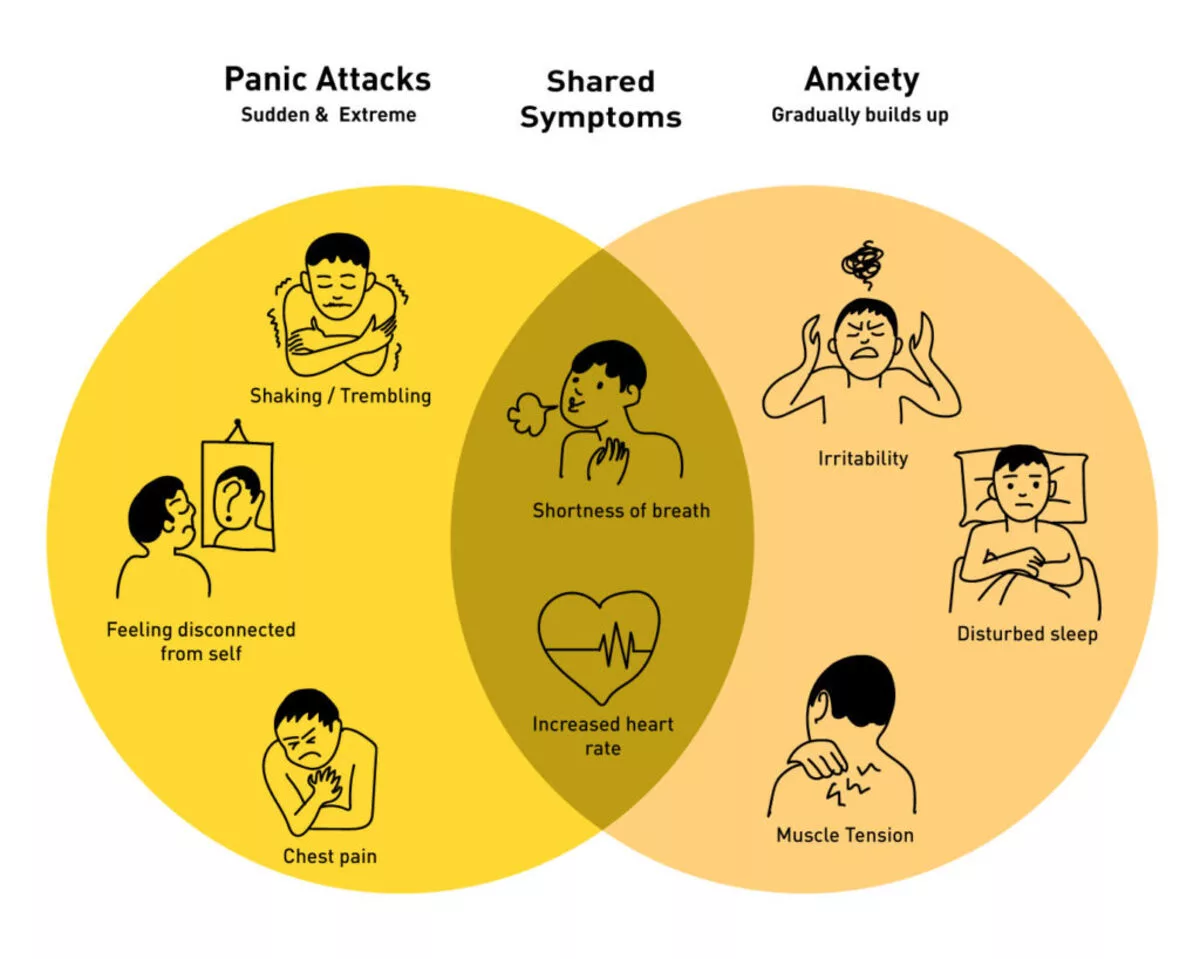Learn about the panic and agoraphobia scale (PAS) and how it can help evaluate the severity of panic disorder and agoraphobia symptoms. Explore the importance of this assessment tool in understanding and managing these conditions. In this article, we will delve into the details of the PAS and its significance in comprehending and addressing these debilitating conditions.
Understanding and Assessing Panic and Agoraphobia: The panic and agoraphobia scale
Living with panic disorder and agoraphobia can be challenging, but with the right tools and assessments, individuals can gain a better understanding of their symptoms and work towards managing them effectively. One such assessment tool is the panic and agoraphobia scale (PAS), which plays a vital role in evaluating the severity of panic and agoraphobia symptoms.
What is the panic and agoraphobia scale (PAS)?
The panic and agoraphobia scale (PAS) is a specialized questionnaire designed to measure the severity of panic disorder and agoraphobia symptoms. It serves as an essential diagnostic tool used by mental health professionals to assess the impact of these conditions on an individual’s daily life. The (PAS) consists of multiple sub-scales, including panic attacks, agoraphobic avoidance, anticipatory anxiety, disability, and functional avoidance (health concerns). By examining these different aspects, the PAS provides a comprehensive evaluation of the individual’s overall symptom severity.
The Importance of Assessing Symptom Severity
Assessing the severity of panic disorder and agoraphobia symptoms is crucial for several reasons. Firstly, it helps individuals understand the impact of these conditions on their lives, enabling them to seek appropriate treatment and support.
Secondly, assessing symptom severity allows mental health professionals to tailor interventions and therapies to address the specific needs of each individual. Lastly, regular assessments using the PAS can track changes in symptom severity over time, assisting in monitoring progress and making necessary adjustments to treatment plans.
Utilizing the panic and agoraphobia scale (PAS) for Evaluation
The panic and agoraphobia scale (PAS) is typically administered by mental health professionals, ensuring accurate and reliable results. However, there are also self-rating versions available that individuals can use to assess their symptoms independently.
The PAS questionnaire includes a range of questions related to panic attacks, agoraphobic avoidance, anticipatory anxiety, disability, and functional avoidance. Individuals rate their experiences and symptoms based on the severity and frequency they have encountered over a specific period, often the past week.
By completing the PAS, individuals can gain insights into the extent of their panic disorder and agoraphobia symptoms. This information helps in creating a more comprehensive treatment plan, including therapy options and lifestyle adjustments, to effectively manage these conditions.
Assessing Treatment Efficacy using the panic and agoraphobia scale
To evaluate the efficacy of the P&A, an open prospective trial was conducted involving 37 patients with PDA. The patients, with a mean age of 32.7 (S.D., 6.3), were treated with imipramine (75-150 mg/day) for 8 weeks. Concurrent agoraphobia patients were provided instructions for practicing self-exposure to agoraphobic situations. The main efficacy criteria for assessing treatment results were the total scores on the P&A, the Hamilton Anxiety Scale (HAMA), and the Clinical Global Impression Scale (CGI).
Positive Treatment Results and Effectiveness of the P&A
The treatment results demonstrated significant improvements, as evidenced by a remarkable decrease in the average severity scores of the P&A observer-rated version from 28.9 (S.D., 8.1) to 13.3 (S.D., 11.8). This reduction was statistically significant (rank statistic TN = 6.7; P < 0.0001), indicating excellent treatment outcomes.
Among the clinician-rated scales, the observer-rated version of the P&A exhibited the largest effect size (rw), closely followed by the CGI and the HAMA. The self-rated version of the P&A also demonstrated a significant effect size among the self-rated scales.
Significance of Subscores and Treatment Effect Sizes
All five subscores of the P&A, including panic attacks and anticipatory anxiety, exhibited significant improvements, further validating the scale’s effectiveness. The subscore related to panic attacks showed the highest treatment effect size, indicating its substantial impact on evaluating treatment efficacy.
Utilizing the panic and agoraphobia scale as a Measurement Tool
The panic and agoraphobia scale (P&A) has proven to be a valuable and reliable tool for assessing treatment efficacy in panic disorder trials. Its observer-rated and self-rated versions offer comprehensive insights into the severity of symptoms experienced by individuals with PDA. By utilizing the P&A, clinicians and researchers can effectively measure symptom severity, monitor treatment progress, and make informed decisions regarding appropriate interventions.
Questions and answers about panic and agoraphobia scale
What is the panic and agoraphobia scale (P&A)?
The panic and agoraphobia scale (P&A) is an assessment tool designed to measure the severity of symptoms in individuals with panic disorder and agoraphobia. It consists of multiple sub-scales that evaluate panic attacks, agoraphobic avoidance, anticipatory anxiety, disability, and functional avoidance.
How does the P&A help assess the severity of panic disorder and agoraphobia symptoms?
By utilizing the P&A, individuals and healthcare professionals can evaluate the severity of panic disorder and agoraphobia symptoms across different dimensions. This assessment provides valuable insights into the impact of these conditions on an individual’s daily life.
Is the P&A a reliable scale for assessing panic disorder and agoraphobia symptoms?
Yes, the P&A has demonstrated reliability in assessing panic disorder and agoraphobia symptoms. It has been extensively used in research studies and clinical practice, making it a trusted tool in the field.
How is the P&A administered?
The P&A can be administered by trained healthcare professionals or self-administered by individuals. Clinician-administered versions involve an interview-based approach, while self-rating versions allow individuals to assess their symptoms independently by completing a questionnaire.
Are all subscales of the panic and agoraphobia scale equally important?
Each subscale of the P&A provides valuable information about specific aspects of panic disorder and agoraphobia. However, the severity of panic attacks and anticipatory anxiety subscores often holds significant importance in evaluating symptom severity and treatment progress.
How can the panic and agoraphobia scale benefit individuals with panic disorder and agoraphobia?
For individuals with panic disorder and agoraphobia, the P&A offers a structured and reliable assessment of their symptoms. It helps in understanding the severity of their condition, guides treatment planning, and enables healthcare professionals to provide appropriate support and interventions.
Is the P&A suitable for both research and clinical practice?
Yes, the panic and agoraphobia scale is widely used in both research and clinical practice settings. Its comprehensive assessment of panic disorder and agoraphobia symptoms makes it a valuable tool for conducting studies and guiding treatment decisions.
Where can I find the panic and agoraphobia scale (P&A) for assessment purposes?
The P&A can be accessed through various sources, including research publications, mental health clinics, and healthcare professionals specializing in panic disorder and agoraphobia.
The panic and agoraphobia scale (PAS) is a valuable assessment tool for individuals experiencing panic disorder and agoraphobia. By evaluating symptom severity across different domains, the PAS provides a comprehensive understanding of the impact of these conditions on daily life.
Regular assessments using the PAS enable individuals and mental health professionals to tailor treatment plans, monitor progress, and make necessary adjustments. If you suspect you are dealing with panic disorder and agoraphobia, consult a healthcare professional who can administer the PAS and guide you towards the most appropriate support and treatment.
Related post: What happens during an anxiety attack













